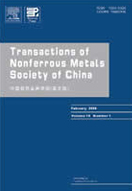Improvement of hydrogen embrittlement and stress corrosion cracking by
annealing for Al-4.4Mg-0.6Mn alloy
annealing for Al-4.4Mg-0.6Mn alloy
(1. Division of Marine Engineering, Mokpo National Maritime University, Mokpo, Jeonnam, 530-729, Korea;
2. Media Engineering, Seoul National University of Technology, Seoul, 139-743, Korea)
2. Media Engineering, Seoul National University of Technology, Seoul, 139-743, Korea)
Abstract: With no annealing treatment, cathodic polarization trends in 5083F Al alloy revealed concentration polarization and activation polarization. However, the annealed specimens have lower current densities at corrosion protection potential compared to the non-annealed specimen. The results of SSRTs conducted in seawater at the applied potential range of −1.8 V to −0.5 V indicated that the maximum tensile strength, elongation, and time-to-fracture had high values at applied potentials of –0.7 to –1.4 V. The maximum tensile strength, elongation, and time-to-fracture decreased when the potential values were beyond this range in either anodic or cathodic direction. In general, the increased shear lip caused by annealing treatment indicates elongation. Time-to-fracture would likely increase with elongation. Potentials between –0.5 V to –0.6 V were found to be in the region of stress corrosion cracking. The corrosion protection zone was determined to be –0.7 V to –1.4 V because these potential ranges produced good mechanical properties. Potential less than –1.4 V produced a fractured surface with a mixture of dimples (ductile fractures) and a quasi-cleavage pattern resulting from the effects of hydrogen gas.
Key words: annealing; 5083F Al-Mg alloy; corrosion; seawater; slow strain rate tests

